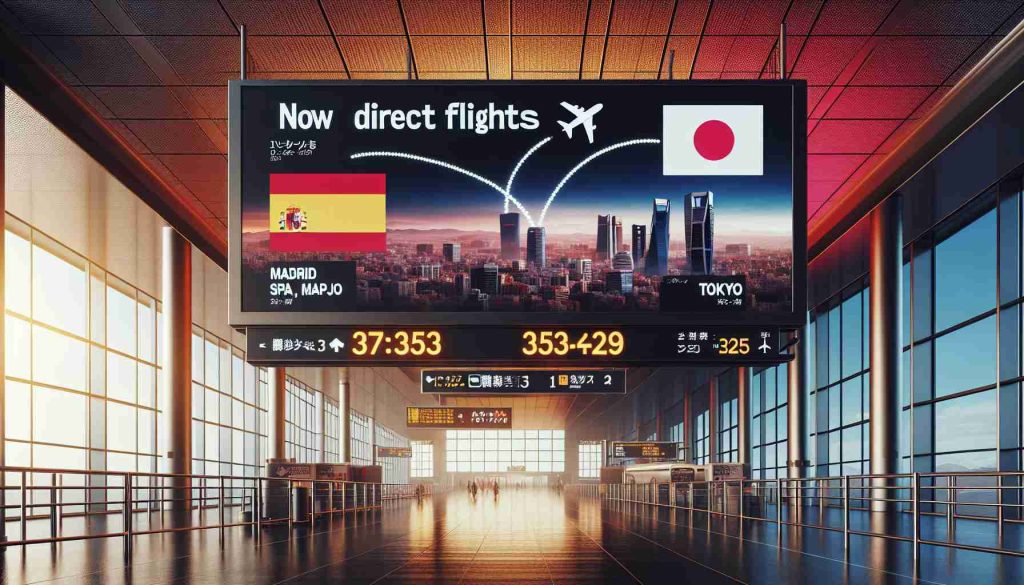Iberia Airlines introduces a new direct flight between Madrid and Tokyo, marking the longest route in its network. The airline, part of the IAG group, previously operated this route from 2016 to 2020, only to have to halt services due to the pandemic.
The new flight, departing from Terminal 4 at Adolfo Suárez Madrid-Barajas airport, will take off at 11:55 on Sunday, landing in Tokyo at 10:45 local time the following Monday after a 14-hour flight. Flights between the two cities will run three times a week, departing from Madrid on Thursdays, Saturdays, and Sundays, and from Tokyo on Mondays, Fridays, and Sundays.
The Airbus A350 aircraft serving this route offers seating for 348 passengers in business, premium economy, and economy classes, providing approximately 90,000 seats in the first year of operation between the two countries.
With the success of their route to Qatar, launched in December 2023, Iberia aims to expand its presence in Asia through this new venture. The opening of this market is projected to contribute around €100 million to the GDP of both countries in the first year, along with the creation of 1,900 direct and indirect jobs.
This initiative, backed by Madrid Tourism by Ifema Madrid, supported by the government bodies of the Community of Madrid, the City Council of Madrid, and Turespaña, marks a significant development in air travel between Spain and Japan, enhancing cultural exchange and boosting tourism.
Additional Facts Revealed:
1. Unique Features of the Airbus A350: The Airbus A350 aircraft utilized for the Madrid to Tokyo route boasts advanced features such as enhanced fuel efficiency, composite materials, and a quieter cabin environment. These attributes contribute to a more comfortable and eco-friendly travel experience for passengers.
2. Schedule Optimization: In order to cater to a diverse range of travelers, the flight schedule includes departures on both weekdays and weekends. This strategic planning aims to maximize convenience and accessibility for passengers flying between Madrid and Tokyo.
3. In-flight Amenities: Passengers aboard the direct flight can enjoy a range of amenities tailored to enhance their journey. This may include premium entertainment options, delectable dining choices, and spacious seating arrangements across all classes.
Key Questions & Answers:
1. What are the primary advantages of the new direct flight between Madrid and Tokyo?
The main advantages include reduced travel time, enhanced convenience for passengers, increased connectivity between the two cities, and the potential for stimulating economic growth and cultural exchange.
2. What challenges or controversies are associated with establishing this new route?
Challenges may include fuel costs and sustainability concerns, competition from existing airlines servicing similar routes, potential geopolitical implications affecting flight operations, and adapting to fluctuating travel demand post-pandemic.
Advantages and Disadvantages:
Advantages:
– Enhanced travel convenience for passengers
– Promotion of cultural exchange and tourism
– Economic benefits for both countries
– Strengthened air connectivity between major cities
Disadvantages:
– Environmental impact due to increased air travel
– Market competition and pricing pressures
– Operational complexities and potential disruptions
– Dependency on consistent passenger demand
Suggested Related Links:
1. Iberia Airlines Official Website
2. Airbus Official Website
3. Madrid Tourism Official Website










More Stories
Revolutionizing Satellite Connectivity in Europe
Revolutionizing the Energy Industry with Cutting-Edge Technology
The Effects of Banking Taxes on Credit Availability and Economic Growth